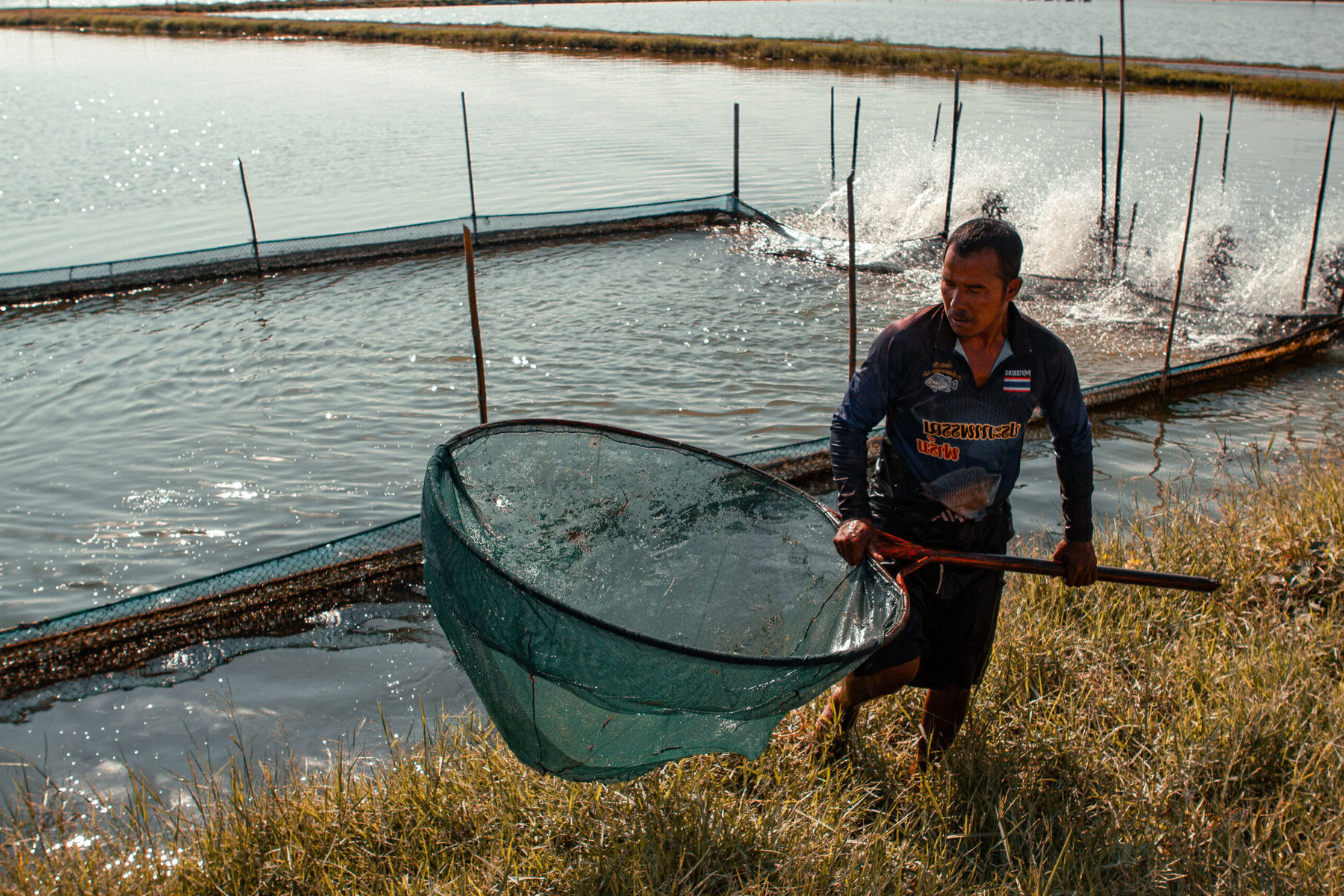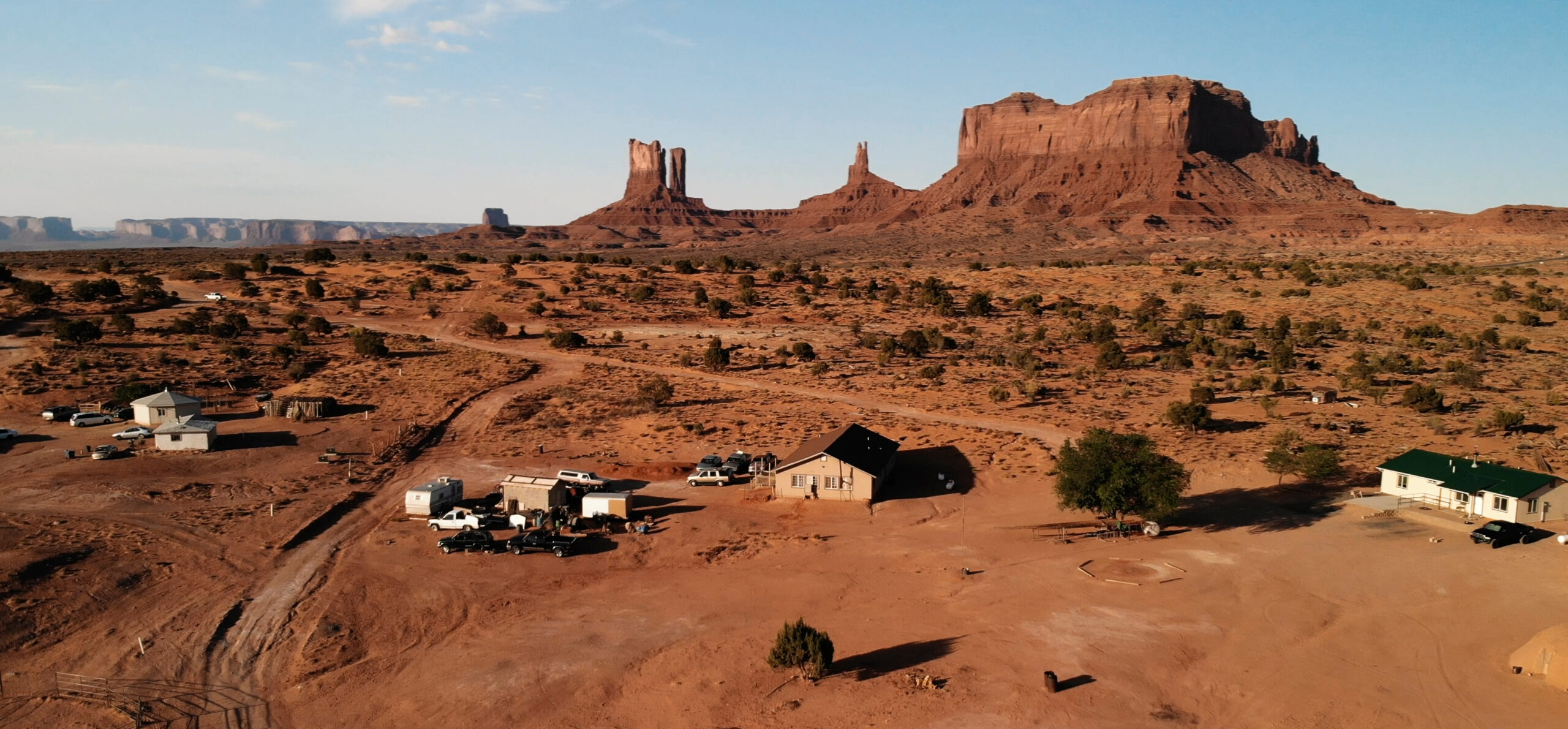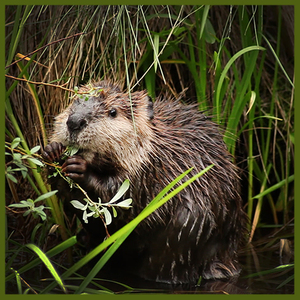Along a small tributary of the Colorado River outside Crested Butte, Colorado, volunteers and workers in waders tromped out into the water and imitated beavers. On summer days, against a backdrop of Rocky Mountain peaks, they piled up larger branches and logs. Then, as water started pooling, they added smaller sticks and layers of sediment.
“Everything about it is a little bit messy,” says Adde Sharp, Colorado River watershed project coordinator for the National Forest Foundation (NFF).
Messiness is part of the point. These obstructions, built in 2021 and 2022, are not stopping the water in streams like this one from flowing to the Colorado River, but they are slowing it down, in an effort to maximize its benefits before it flushes downstream.
The once-mighty river that hydrates and powers the American Southwest is in crisis. About 19 percent less water is flowing through the Colorado River compared to last century’s average. Some 40 million people in the US and Mexico rely on the river for drinking water. The two largest reservoirs, Lake Mead and Lake Powell, are at or below a third of their full capacity. With no agreement among the seven affected states on a plan to manage the dwindling flow, the Biden administration earlier this year proposed imposing cuts on water usage.
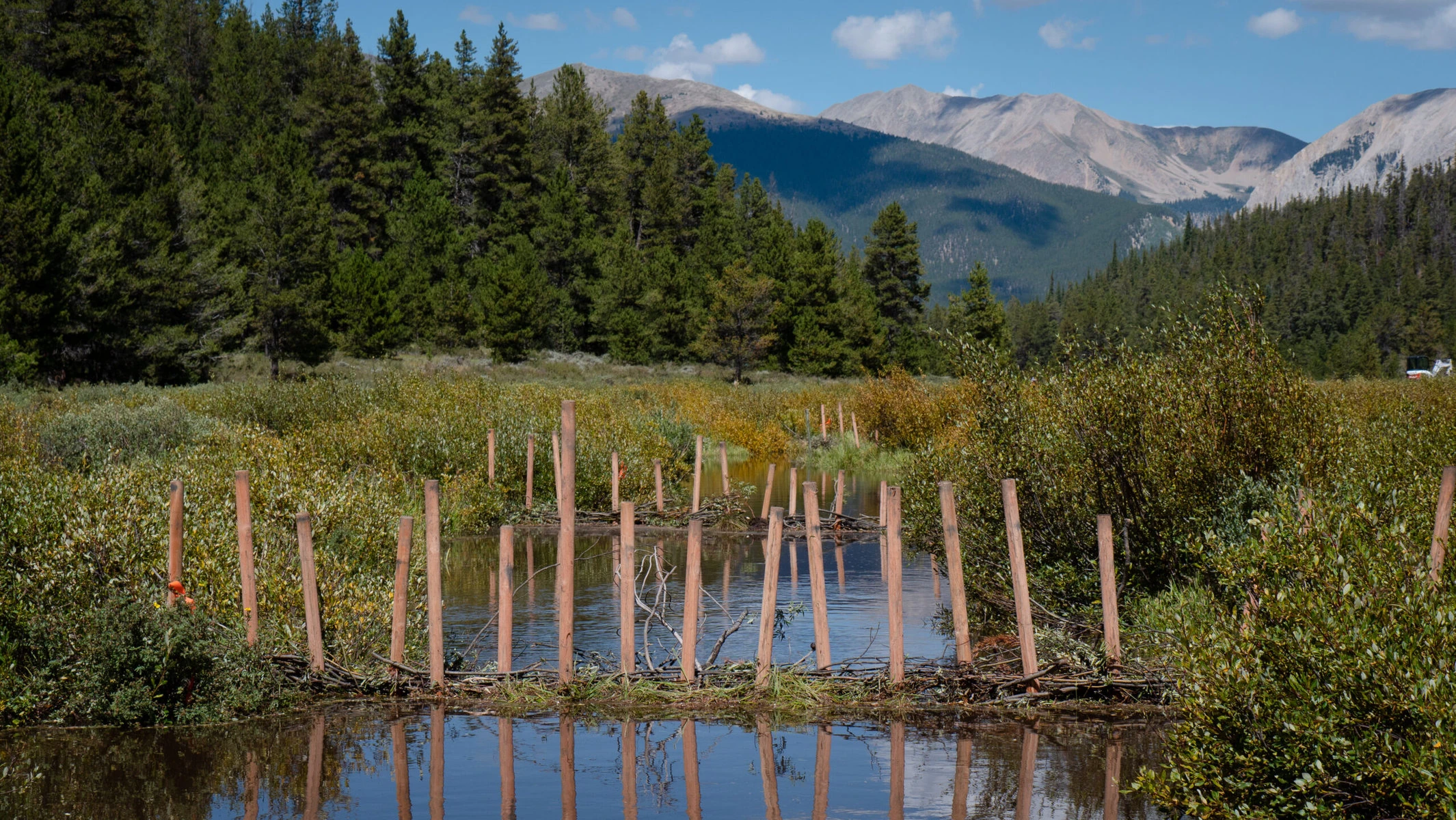
Amid this crisis, scientists and nonprofits, including the NFF, are looking to the river’s headwaters, using a strategy known as low-tech, process-based restoration, or LTPBR, to improve wetlands and riparian landscapes along smaller waterways that run into the Colorado River. By reinvigorating riverside habitat that has been lost, these areas can help hold water higher in the Colorado Basin watershed for longer — mitigating spring flooding and releasing water slowly through drier months — as well as yielding a host of benefits for the ecosystems along the way.
“You can’t put more water in the Colorado,” says Sharp, who is co-leading an effort to apply the approach to more small rivers and creeks on national forest land across the basin. “Let’s start at where the Colorado starts and make that healthier.”
Rivers are not naturally the tidy lines represented on maps. They wiggle, divide and inundate the land around them. But over centuries, humans confined and straightened rivers and creeks for industry, agriculture and development. More than a third of headwaters across the West have been modified.
Another key factor that changed rivers: the disappearance of beavers. “Nature’s engineers,” as they’re known, once estimated to number more than 100 million across North America, built ponds and channels that dried up as the beaver population was decimated by hunting, their pelts prized for making hats. Numbering around 15 million on the continent today, beavers have earned a reputation as pests thanks to their tree-felling and water-damming habits. But a growing body of research shows that beavers’ building activities were responsible for creating and maintaining the type of valuable wetland habitat around rivers that has dwindled.
Crushed by negative news?
Sign up for the Reasons to be Cheerful newsletter.Without “speed bumps” like beaver dams, water runs faster, eroding the river’s channel into the earth. As waterways carve deeper, plant roots can’t reach the flowing water, and the type of vegetation that grows around the river changes. That has a lot of consequences, explains Evan Dunbar, Sharp’s co-program leader at NFF. Healthy wetlands around a river absorb snowmelt and storm precipitation, reducing the peak of flooding downstream. Then they release that water slowly over time.
“They’re essentially big sponges,” says Dunbar. “With the shifts in our climate cycle that we have here in the Southwest and the Rocky Mountain region, we expect more intense rain systems and precipitation events, and so it becomes more and more valuable to be able to extend the seasonality of that flow throughout the year.”
Low-tech, process-based restoration aims to reestablish the connection between waterways and the landscape around them by, essentially, mimicking beavers. The strategy involves installing a series of structures, typically built of foraged material, in a streambed that will hold back the water and cause it to pool up and spread out onto the surrounding land.
The strategy has been used on public lands and in partnership with ranchers in other parts of the West. Now, Sharp and Dunbar are working with NFF to use the technique on national forest land in the Colorado River watershed. Two projects have been completed so far. Fourteen more are planned for the next two years, and NFF is working to create a pipeline to realize more of these types of projects in suitable locations. More than 60 percent of the water that flows into the Colorado River starts from national forest land, which covers almost 20 percent of the total basin land area.
Beavers’ impact on the landscape is not limited to building dams. They also clear brush from nearby trees. Humans can replicate that by foraging materials from nearby, no further than a beaver could carry a log. Moreover, the use of local materials, without any need for heavy machinery, makes the projects affordable to install compared to hard structure alternatives, Dunbar explains.
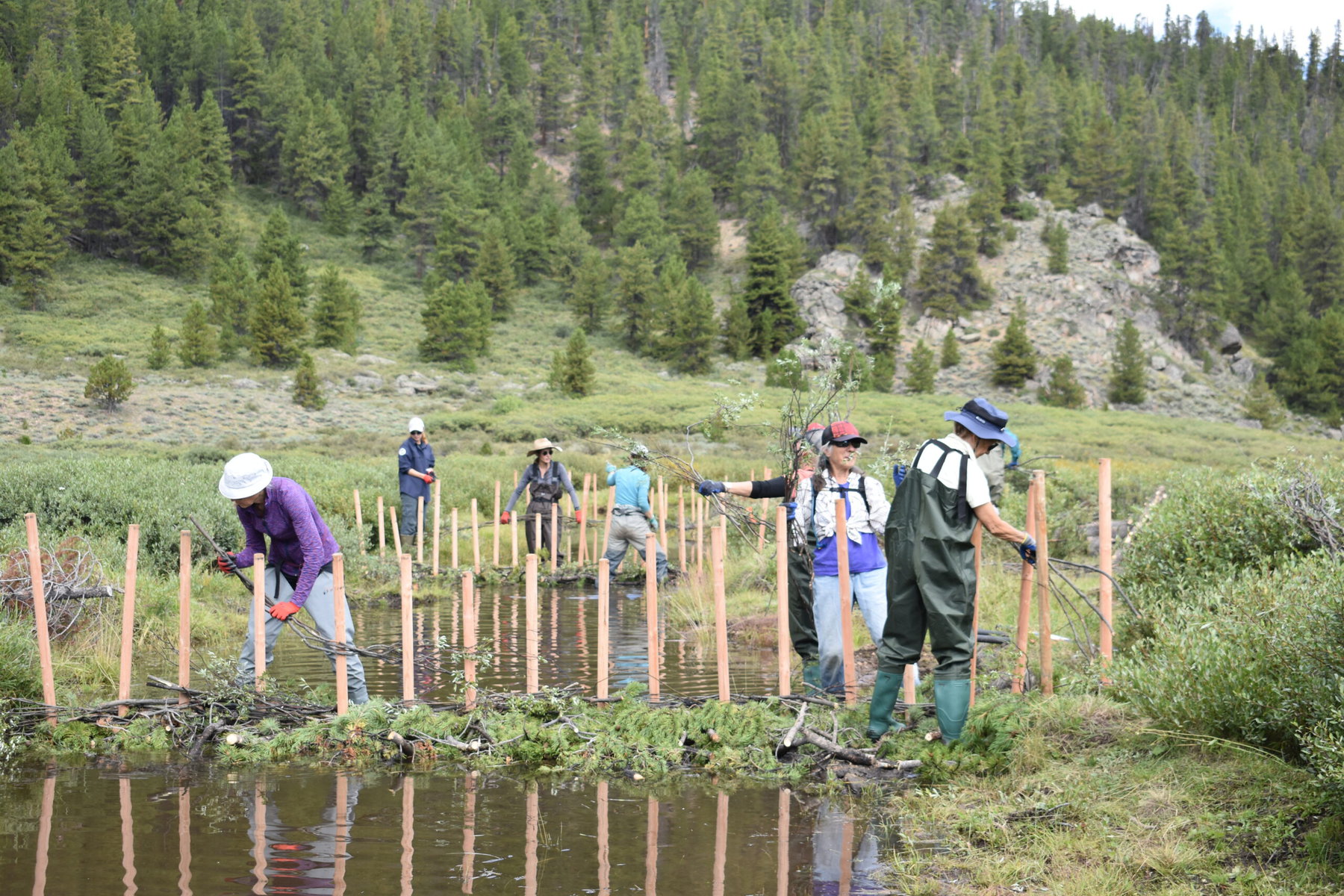
In places like the Colorado Rockies, where there’s a lot of woody debris, river restoration teams often build “beaver dam analogs,” piling up logs and sticks as a beaver might — sometimes starting with some posts for stabilization. Another model involves driving posts into the streambed in a line and weaving together pliable willow branches, fashioning a fence that will catch other sticks that wash downstream. Projects tend to include a lot of small structures in a concentrated area. Along a mile and a half of river near Crested Butte, about 100 structures were installed, according to Sharp.
In drier parts of the basin, near Dunbar’s base in Flagstaff, Arizona, teams use the material at hand: rocks. In addition to beaver dam analogs, river restorers nestle rocks into a sloping wall in the streambed to form a structure known as a Zuni bowl, or line stones across the riverbed in a “one-rock dam” that catches sediment before it washes downstream.
Low-tech restoration projects like these show a lot of promise. A 2022 report by American Rivers found that in addition to improving resilience to flooding and drought, the projects support biodiversity, improve water quality, and mitigate erosion. These projects have also been found to increase vegetation growing in the area by up to 25 percent, supporting hungry wildlife and grazing livestock.
Emily Fairfax, a hydrologist at California State University Channel Islands, says that the ways beavers interact with the river and landscape bring a host of ecological benefits. Beyond causing water to overflow into floodplains with their dams, they dig canals to get around, which serve to irrigate the whole area. Fairfax found in her research that riparian vegetation growing around an area that’s home to beavers is three times more likely to survive a wildfire, creating a refuge for other species.
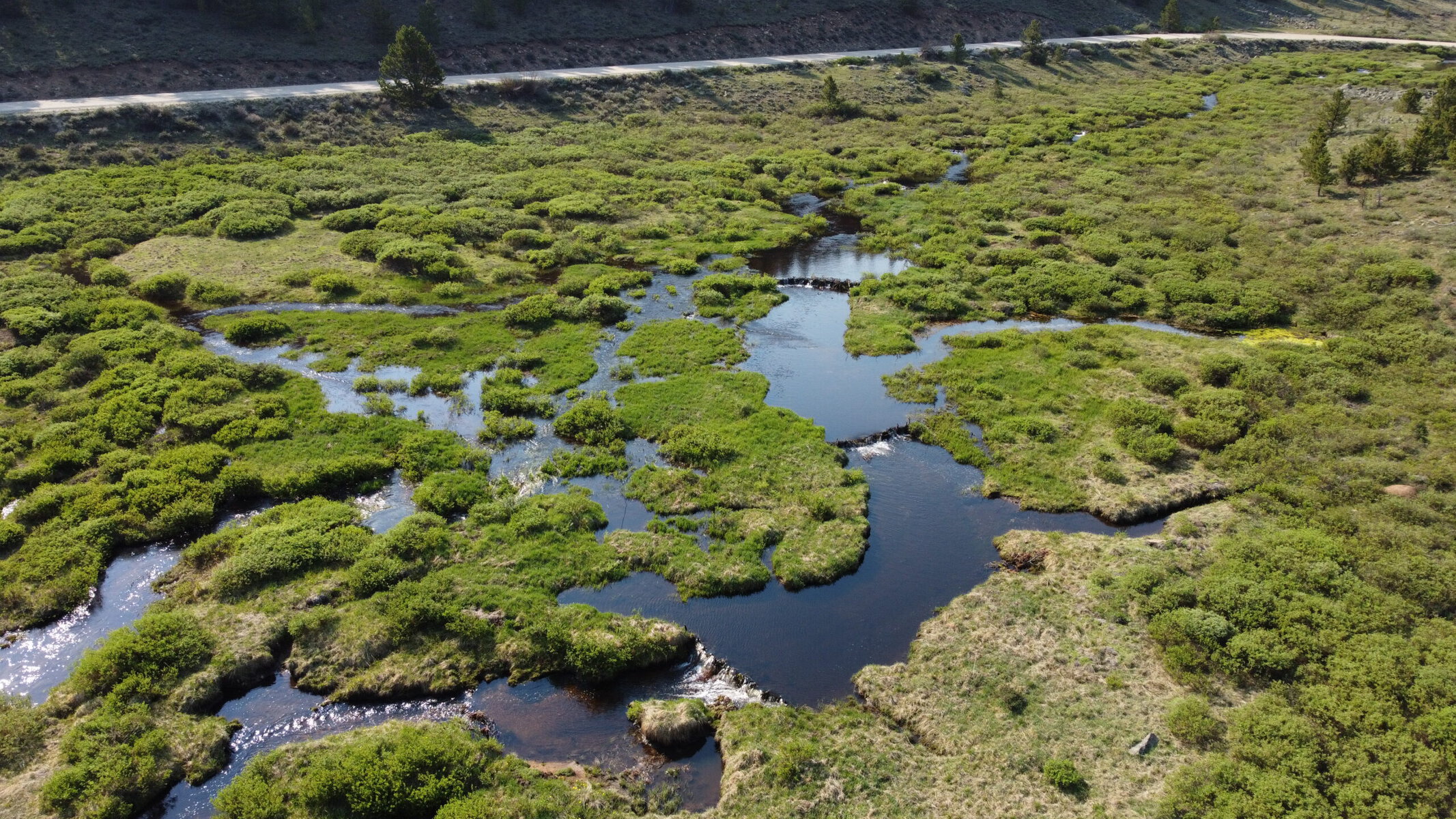
In beaver-mimicking restoration projects, “the goal is to really create this incredibly complex, messy, aquatic area,” Fairfax says. “We don’t want it to look like a nice and tidy little stream.”
Fairfax has seen beavers move right into human-built beaver dam analogs. Sometimes they’ll set up a few feet away and pillage the manmade structure for material. That’s a sign that the project worked to make the area more hospitable, she says. Beaver dam analogs can give an area a “kick start” to welcome beavers in — and to start making these areas around streams more resilient to climate change.
But until the beavers step in, human-built dam analogs are a helpful starting point. “We don’t have enough beavers to undo all of the degradation that has been done to North American streams in the last 200 years,” Fairfax says. “We could wait forever, and hope that the beavers do it on their own, or we can start helping.”
Low-tech, process-based restoration is not the right fit everywhere. For one, there needs to be space for a soggy, wild floodplain, so stretches of river adjacent to infrastructure or areas with buildings are not good candidates. There’s also some hesitance around these projects based on concerns related to the rights of downstream water users.
Fay Hartman, Southwest regional program conservation director for American Rivers, says it’s important to plan locations with the expectation that beavers might move in — which can lead to conflicts around culverts and irrigation systems. Being in touch with local property owners and downstream neighbors is key.
The benefits of upstream floodplains and wetlands restoration can flow through the river system, but Hartman and others caution that this type of restoration isn’t a “silver bullet” that will solve the water crisis in the Colorado River. Partnered with other measures, like regenerative agriculture and forest management, it can contribute to improving the river basin’s prospects.
“It is a piece of a puzzle,” Hartman says.
Still, she says, the effort to make the rivers at the top of the watershed healthier can have ripples throughout.
About three miles of river outside Crested Butte has now been restored using techniques based on beavers through NFF’s project. Already, Sharp says, while the project is still fairly young, there’s been a clear shift as the incised stream channel transformed into a riverscape with water spreading across the valley.
In a major sign of success, beavers moved into the NFF project last year, according to Sharp. “That’s awesome because they take over the maintenance,” she says.
The approach taps into natural processes that can make the watershed and the ecosystem more resilient, she says. “It is a pretty powerful way to do a little and then let nature do a lot.”


